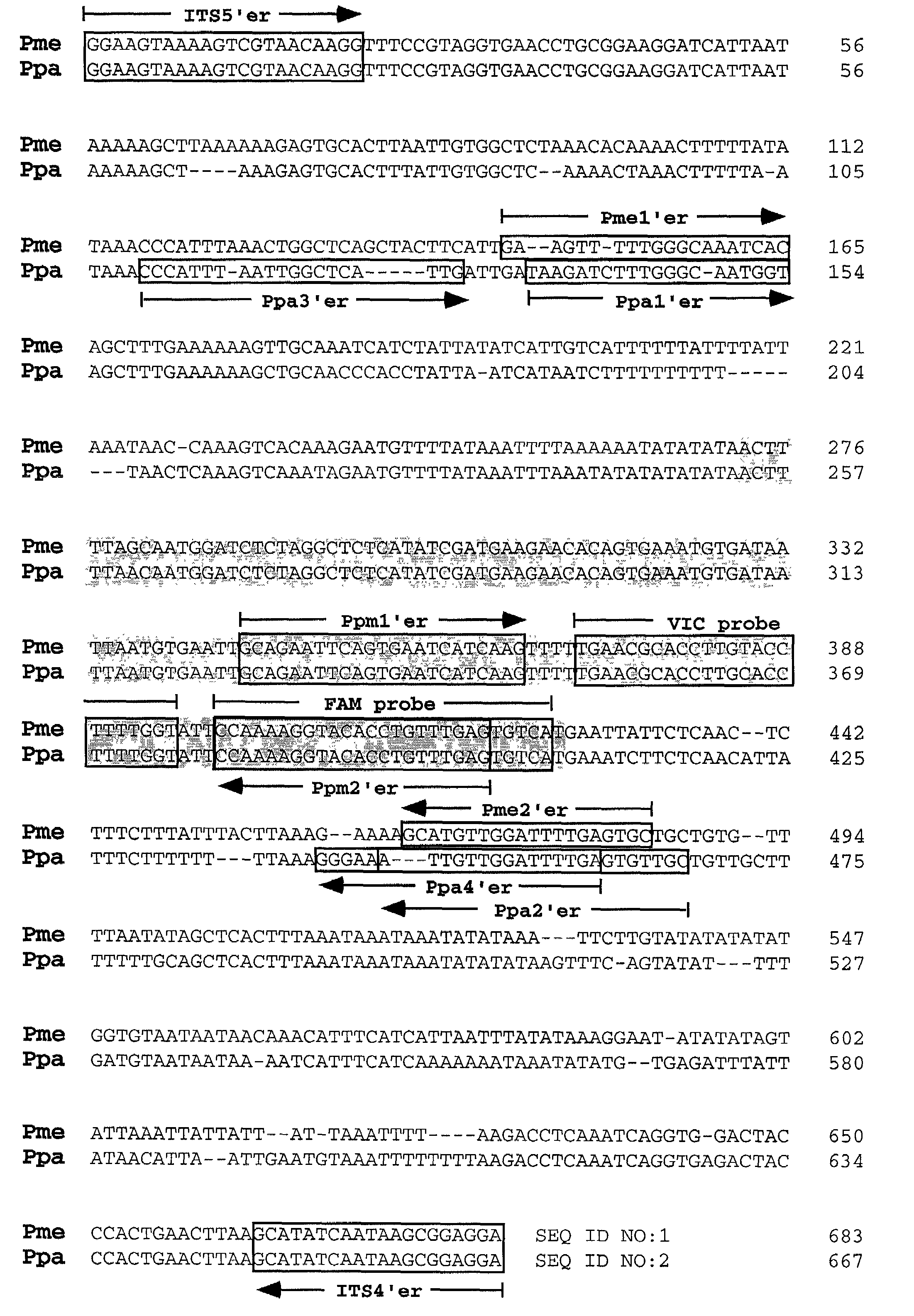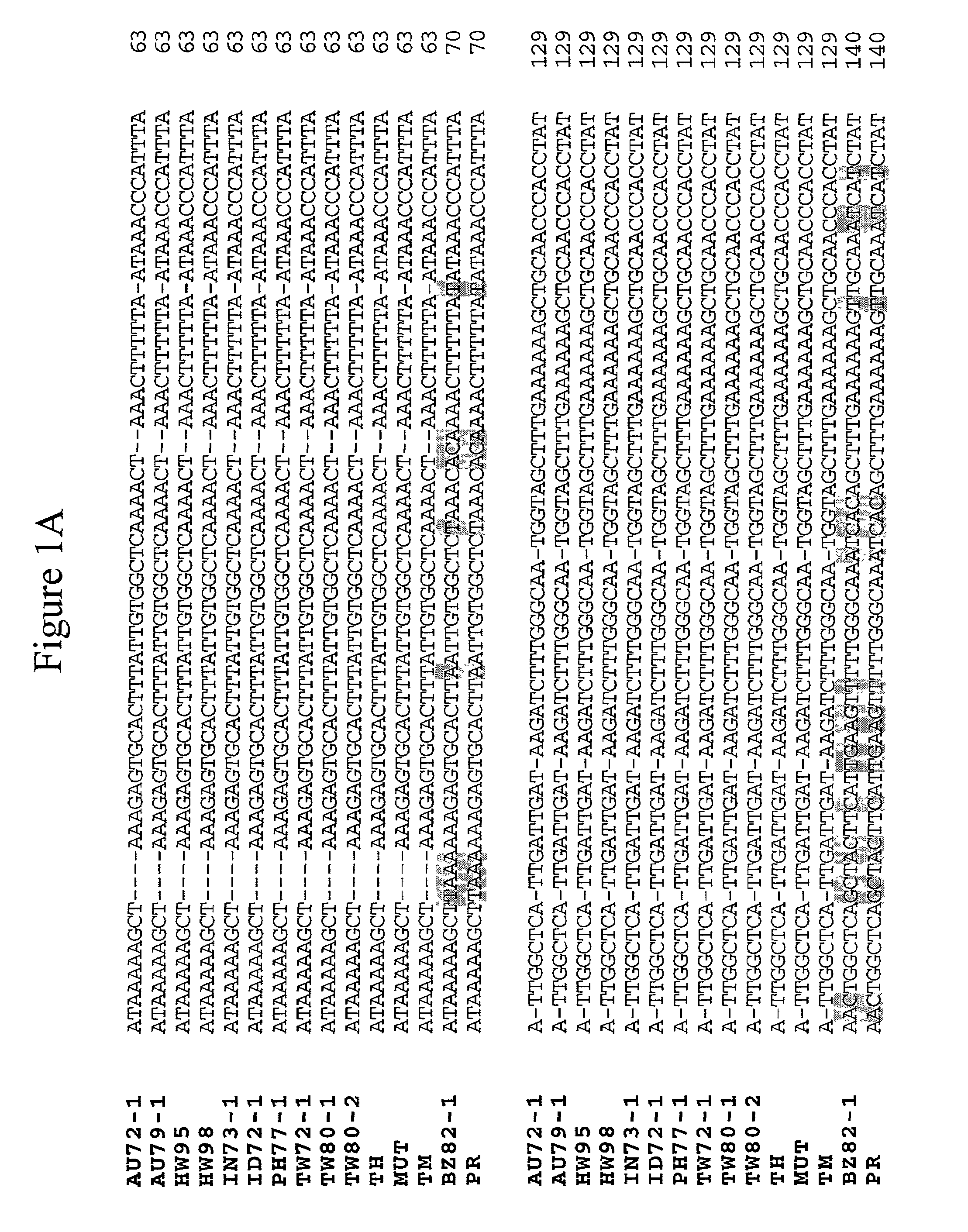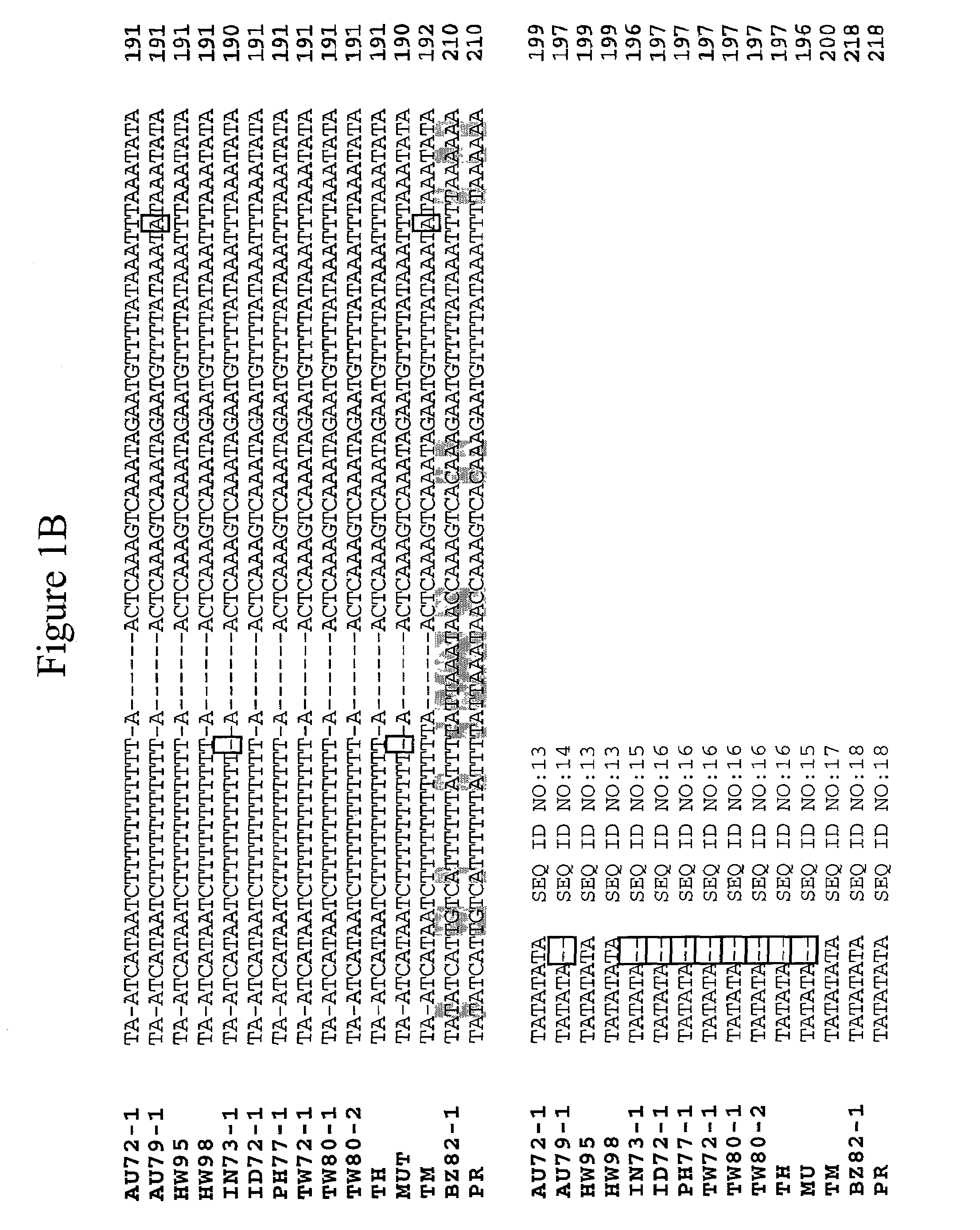PCR methods for the identification and detection of the soybean rust pathogen Phakopsora pachyrhizi
a soybean rust and pathogen technology, applied in the field of pcr methods for the identification and detection of the soybean rust pathogen i > phakopsora pachyrhizi /i>, can solve the problems of slow method, inconvenient detection, and potential threat to other countries
- Summary
- Abstract
- Description
- Claims
- Application Information
AI Technical Summary
Benefits of technology
Problems solved by technology
Method used
Image
Examples
example 1
Fungal Isolates and Growth Conditions
[0050]The origin and source of P. pachyrhizi and P. meibomiae isolates used are shown in Table 1. The isolates are maintained at the USDA-ARS Foreign Disease-Weed Science Research Unit (FDWSRU) Plant Pathogen Containment Facility at Ft. Detrick, Md. (Melching et al. 1983. Plant Dis. 67: 717–722) under APHIS permit. P. pachyrhizi and P. meibomiae isolates were propagated by spray inoculation onto the soybean cultivar Williams and red kidney bean, respectively. Red kidney plants were used to propagate P. meibomiae isolates because they yield significantly more urediniospores than do soybean plants. Urediniospores were suspended in sterile distilled H2O containing 0.01% Tween 20 (vol / vol) at a concentration of 2500 spores / ml, and 2.5 ml of inoculum was sprayed per plant onto either soybean or red kidney leaves using an atomizer attached to an air compressor. The plants were incubated overnight (14 to 18 h) in dew chambers at 20° C. and transferred t...
example 2
DNA Extraction and Recombinant DNA Techniques
[0052]For crude DNA preparations, approximately 5 to 10 mg of urediniospores of each isolate were placed onto the surface of sterile distilled H2O in 50×9 mm petri plates, and the spores were allowed to germinate at room temperature (20–22° C.) overnight. Mycelial mats were collected by filtration onto Whatman No. 1 filter paper, and the tissue was ground in 200 ml of extraction buffer (89 mM Tris-HCl (pH 8.0), 45 mM boric acid, 0.05 mM EDTA, and 1.0% (vol / vol) β-mercaptoethanol) in microcentrifuge tubes using a plastic pestle attached to a power drill. Samples were incubated at 76° C. for 15 min, and then centrifuged at 16,000×g for 10 min to pellet debris. The supernatants were transferred to new tubes and stored at −20° C. as DNA extracts. DNA from the Zimbabwe isolates, MUT and TM, was extracted as described above from intact urediniospores without germination on sterile distilled H2O.
[0053]Large scale DNA isolations were conducted us...
example 3
DNA Sequencing and Analysis
[0056]Plasmid DNA was extracted using a Wizard Plasmid Mini-Prep kit (Promega Corp., Madison, Wis.) according to the manufacturer's directions. The concentration of DNA was determined by UV spectrometry at 260 nm using a SmartSpec 3000 (BioRad Inc.), and the DNA was labeled using an ABI Prism Big Dye Terminator Cycle Sequencing Ready Reaction kit (Applied Biosystems, Inc., Foster City, Calif.). The nucleotide sequence was determined by capillary electrophoresis using an ABI Prism 310 Genetic Analyzer (Applied Biosystems, Inc.). Nucleotide sequences were aligned using the Bestfit and Pileup programs of the Genetics Computer Group computer software package (Version 9.0) (Deverex et al. 1984. Nucleic Acids Res. 12: 387–395) at the Advanced Biomedical Computing Center of the National Cancer Institute, Frederick, Md.
[0057]A nucleotide sequence comparison of the ITS1 (FIG. 1) and ITS2 (FIG. 2) regions of the P. pachyrhizi and P. meibomiae isolates is shown. The ...
PUM
| Property | Measurement | Unit |
|---|---|---|
| temperature | aaaaa | aaaaa |
| temperature | aaaaa | aaaaa |
| temperature | aaaaa | aaaaa |
Abstract
Description
Claims
Application Information
 Login to View More
Login to View More - R&D
- Intellectual Property
- Life Sciences
- Materials
- Tech Scout
- Unparalleled Data Quality
- Higher Quality Content
- 60% Fewer Hallucinations
Browse by: Latest US Patents, China's latest patents, Technical Efficacy Thesaurus, Application Domain, Technology Topic, Popular Technical Reports.
© 2025 PatSnap. All rights reserved.Legal|Privacy policy|Modern Slavery Act Transparency Statement|Sitemap|About US| Contact US: help@patsnap.com



